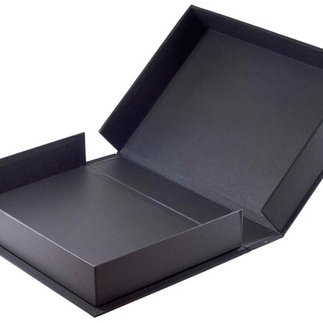What's actually meant by 'archival'?
- Peter Crush

- May 2, 2024
- 6 min read
What does the word 'archival' mean when it comes to protecting our books? And how can we be sure that products that are claimed to be archival, actually are?

If you didn’t already know it by now, book collecting is full of words that appear to have a very clear meaning (such as descriptions of conditions, like ‘fine’ or ‘near fine’), and yet these same words often get abused and become a catch-all to describe something which it isn’t.
A prime example of this is the word ‘archival’ – or the phrase ‘archival quality’ – as a way of declaring a product as being suitable for storing/protecting your rare books.
Unfortunately, it's often used to push products that sound like they do something useful but do not (and which might actually cause damage and harm).
So what does ‘archival’ actually mean?
Broadly speaking, if something is described as being ‘archival’ it is supposed to be able to be used for the long-term protection of items without creating any extra damage.
However, ‘archival’ is not a specific international standard, and so products can sometimes be called archival by over-zealous marketers when in fact, they are not, and could actually cause significant long-term damage.
That’s why in this blog, we’re taking a closer look at what archival actually means, and what you should be looking out for.
Typically, it applies to two types of product that book collectors will come across - archival boxes to keep books in, and archival sleeves (or dust jacket protectors) to put around their books.
Archival boxes
Although there is no specific definition of what something has to be to be archival, strictly speaking, for a box to be referred to as being ‘archival’ it must be made of materials that are at the very least structurally sturdy enough to protect the inside against knocks, but more importantly, be chemically stable – and by that, one typically means it has to be ‘acid free.’
Here at least, one very specific yardstick can come into play – it’s pH.
The pH of archival storage materials should ideally range between 7 to 8.5 and must definitely not be outside this.
This means standard brown cardboard boxes (even strengthened ones) are definitely ‘not’ archival.
For extended periods of time cardboard boxes are not great storage vehicles – even though most of us will probably have stored (or maybe currently store) at least some of their books in them at some point.
The reason they’re not archival is because these boxes will usually made from low quality, unrefined pulp, which means acid will eventually develop as the board ages.
Acid free doesn’t stay acid-free
It’s worth noting however, that even acid-free card (acid-free at the point of manufacture), will eventually release acid over time, and so it doesn't stay acid-free.
As such, better quality archival boxes should also have some form of what is known as an ‘alkaline buffer’ added in its material structure (usually calcium carbonate). This will neutralize any acids that are produced over time.
All-told, it means card with a slightly higher than 7 reading is best for archival card boxes.
This is because it will mean they are slightly alkaline (usually due to the added buffer).
One final thought: Archival boxes should also be lignin-free. Lignin is a complex oxygen-containing organic polymer that, with cellulose, forms the chief constituent of wood. It reacts with light to produce heat and acid and which will darken paper.
If you are in any doubt, some there are some standards you should look out for do from various suppliers:
ISO9706: This Is an international standard around the permanance of paper and board. It signifies that the cardboard has high quality pulp, with a low level of remaining lignin – meaning that it resistant to oxidation (according to a so-called ‘Kappa number). The Kappa number must be less than 5.0. This ISO also establishes a minimum tear resistance; and tolerances for minimum and maximum pH value. It also requires a minimum of 2% chalk as a buffer
ISO 6588: This determines whether a card box meets has been measured for its pH value correctly.
PS Archival papers come in a variety of weights up to 225 g/m2 - after which it is defined as board.
What else you might spot:
Solander Boxes:

Some sellers supply particularly rare books in a ‘Solander Box’ – offering both show and protection (see You Only Live Twice).
They are normally made from buckram – a cloth made from cotton or linen (usually the former), impregnated with an acrylic coating.
It’s still worth checking these are (preferably) made from archival linen.
Archival linen is mould resistant and is what is approved by the British Library for the storage of paper books/artifacts.
Some Solander boxes – such as those made by Archival Survival are also sealed with pH neutral adhesive and are lined with buffered archival paper.
Dust jacket protectors
Dust jackets also require caution when buying.
If a dust jacket sleeve is described as being ‘archival’ then it must ideally be made of 100% polyester (and collectors should check this – because sometimes they are not) – and at the very least polypropylene (see later).
Technically speaking archival polyester is a biaxially-oriented polyethylene terephthalate (or BoPET) – which is a film made from stretched polyethylene terephthalate.
A totally 100% polyester sleeve is one that is chemically inert – that is, free of any other surface coatings that could compromise its interference with anything (ie paper) that comes into contact with it.

There is a bit of a debate online as to whether polypropylene-made sleeves can also be considered to be 'archival', but the consensus seems to be that they are acid-free, but they do not seem to be able to withstand the same sort of handling that polyester sleeves can. They are less transparent, and tend to scratch more easily (remember, if something is 'archival' it tends to require some element of durability).
What should definitely be a big red flag is if a sleeve has a ‘plastic’ smell to it.
If so, then could contain 'plasticisers' (such as PVC) – which quickly degrades and lets off harmful acids, including hydrochloric acid, and gases such as chlorine.
Names you might be familiar with are ‘Mylar’ and Brodart – but these are simply brand names.
Mylar for instance – which is one of the most recognised jacket protector brands is the brand owned by DuPont.
The key is just to look for is what the plastic covering is actually made from.
Brodart and Mylar both claim to offer plastic that is crystal clear, with a glossy finish that will not yellow or crack with age.
Brodart’s ‘Just-A-Fold’ product – for instance – is a favourite of mine. It is manufactured from 38-micron polyester film and also comes with an acid free paper liner. Even the glue used to attach the paper to the sheet is archival PVA.
PS: Don’t judge a book by a dirty-looking jacket protector!

Today’s dust jacket protectors have certainly improved over time.
It’s very likely collectors will have stumbled across books sporting very old plastic covers, which certainly ‘did’ yellow badly and would even start to disintegrate, with the sleeves looking significantly aged.
I still see many books being sold in their original sleeves, and outwardly, they all look horrible, and give the impression of a badly sun-damaged inner jacket.
BUT… it’s worth noting that these older, yellowed plastic jacket protectors have still (more often than not), done a sterling job in protecting the jacket inside.
What lies beneath - a very bright jacket!
I’ve had the good fortune (on several occasions) of freeing a jacket from a badly browned and brittle plastic sleeve, only to find a gloriously protected paper jacket inside (see above left and below).
Sometimes you have to look past the outside look of a book covered in with an old protector, because the chances are, the inside jacket will still be in excellent, bright condition, even if the exterior of the plastic looks stained, and yellow.

The reveal! Behind a yellow, sun-stained jacket sleeve can sometimes be a pristine jacket
What jamesbondfirsteditions.co.uk does:
It would be remiss of us not to say what jamesbondfirsteditions.co.uk does!
We want your perfect first impression books to stay perfect for as long as possible.
So, on all first impression books sold here, we guarantee to supply your purchased book with a jacket housed inside a brand new acid-free paper-backed Brodart polyester cover.















Comments